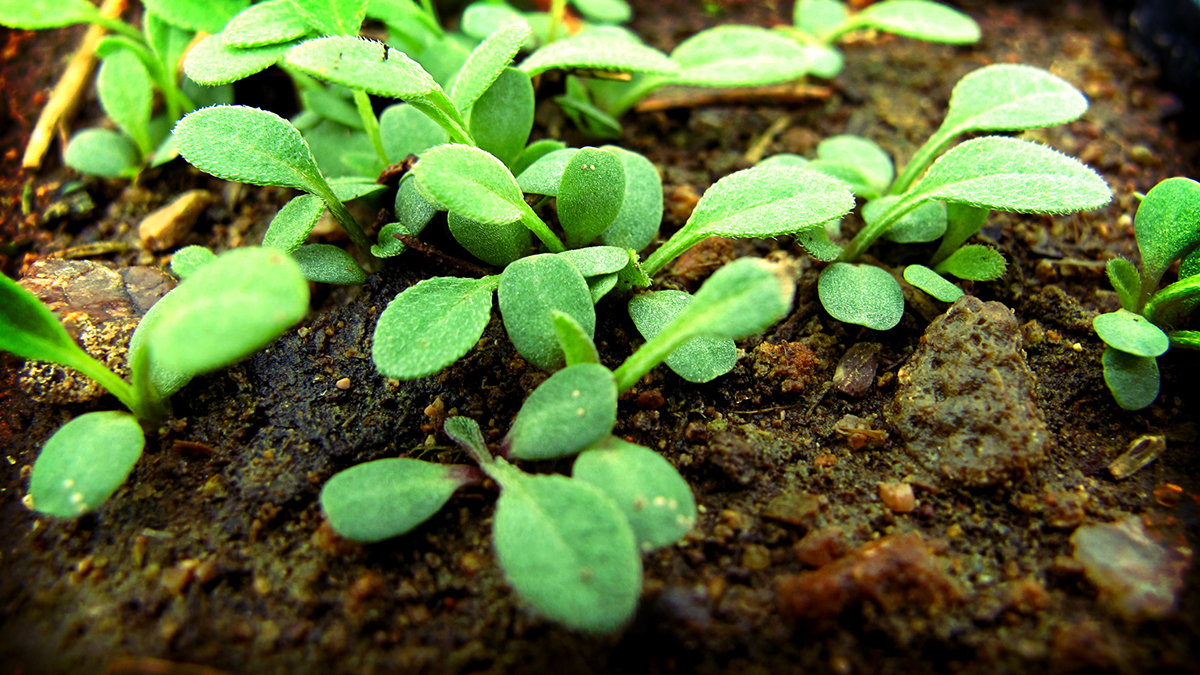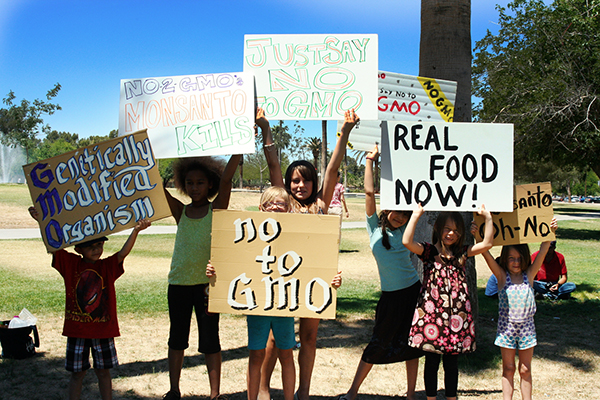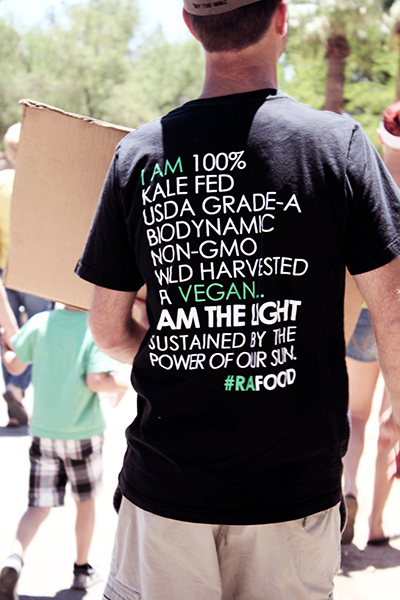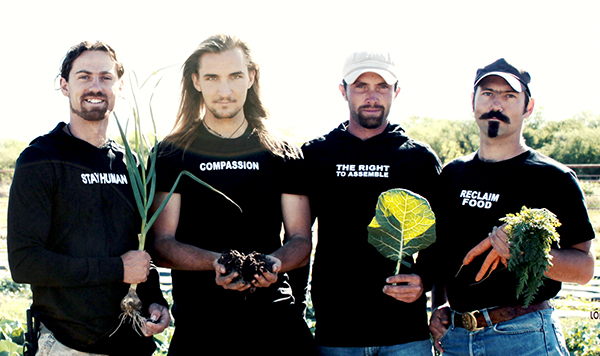
The Consciousness Of Sustainability And Growing Food. Digging The Dirt Out Of Your Thinking Before You Plant One Seed In The Ground.
I am glad that there are people all over the country who are trying to start communities and grow natural food. However, sustainable living is not just done on a physical level. Long-lasting and continually evolving sustainable living is a shift in consciousness, a state of being. It is a total lifestyle and a way of thinking and doing that involves every area of your life.
You can’t bring the city to your new country home. This is what Americans have done for decades, in trying to move away from the city to the suburbs, thinking that was going to change the quality of their lives, but all they did was make the new suburbs extensions of the cities. Even in the cities, you can begin to live more sustainably by composting and recycling and trying to conserve on gasoline by using mass transit, walking, bicycling, and using smaller, more compact vehicles, even electric vehicles and other hybrid cars.
In order to really live sustainably, you have to leave the self-serving system that is based on corporate and individual greed and short-sighted, materialistic interests. And it will take some time to be independent of the system that basically rules the world today.
In order to manifest as much independence from the materialistic system as possible, it must begin in your mind, in your consciousness, which determines your decisions and actions. And you can’t do it alone. It’s going to have to be with a group of individuals, all working together to make this more sustainable way of living happen.
Buying land together may be the first physical step, building “green” the second, but before you do either one, you should have many meetings together, deciding how to live in a “green”, sustainable consciousness, because really you are the permaculture—the new culture, away from the system of greed that results in environmental and social disasters, from which you and your children suffer.
The escape has to come not just physically but mentally. You have to escape the marketing of the multitude of unnecessary products and the innumerable influences that perpetuate materialistic values of unregulated consumerism and selfish, unhealthy pursuits. You can’t live on the farm with its natural rhythms and have the frantic, fast pace of the city at the same time. Many communities have tried to live in both worlds, but these communities soon disperse, or they become ineffective and unsustainable.
Living “in community” interdependently, you have to learn “to live and let live”. If you move to a rural intentional community, you have to get used to the sounds of children playing and laughing right outside your window, of people using a kitchen appliance while you may still be in bed, of cows mooing, goats bleating, chickens clucking, horses whinnying, and tractors plowing the fields. It’s a different type of sound from what you would hear from your city apartment’s window—the constant hum of trucks, cars, and trains; honking horns; screeching sirens; several radios blaring at the same time on different stations; and so on. In intentional community, you’re not living alone anymore (or with just your small nuclear family) in your urban apartment or suburban house.
Of course, when moving to the country to live in an intentional community, you don’t want to bring your heavy metal albums and think you can play them as loudly as you did in the city. You have to get used to earphones and have respect for the sound privacy of others, as they need to respect yours.
Jesus said 2,000 years ago that the first-century followers of God should break bread together, go house to house, and have all things in common. Today there is a popular saying that “thick walls make for good neighbors”, but in a true community there should be many houses on the same land and no fences, except for those fences to protect the animals from predators and for safety reasons.
 Many Native American tribes and other tribal cultures did not have fences to separate themselves from their fellow tribesmen. Fences that separate people from each other are a white man’s invention. Peaceful tribal peoples understand the way of true living together in community and were not the “savages” the white man made them out to be. They actually enjoyed each other’s children; they enjoyed the sound of their cries and playful times. They enjoyed the sound of their animals. It was the white man who brought the noise of the trains roaring across the hunting grounds with so-called sportsmen killing the buffalo in the hundreds from the windows of the trains, leaving the carcasses to rot in the sun. What a waste of life and of food.
Many Native American tribes and other tribal cultures did not have fences to separate themselves from their fellow tribesmen. Fences that separate people from each other are a white man’s invention. Peaceful tribal peoples understand the way of true living together in community and were not the “savages” the white man made them out to be. They actually enjoyed each other’s children; they enjoyed the sound of their cries and playful times. They enjoyed the sound of their animals. It was the white man who brought the noise of the trains roaring across the hunting grounds with so-called sportsmen killing the buffalo in the hundreds from the windows of the trains, leaving the carcasses to rot in the sun. What a waste of life and of food.
Before being forced to live on reserves and reservations, most Native Americans lived sustainably because they lived closely with the natural world, understanding its rhythms and valuing the resources that nature blessed them with. With the rising and setting of the sun and the cycles of the seasons, they could tell the time of the day and the year, knowing when to hunt and when not to. From the sun in the day sky and the stars in the night sky, they could tell the direction. People today get lost if they don’t have a GPS. Getting back to living with the laws, cycles, and rhythms of the earth is a necessary step that one must make in consciousness, as well as beginning to learn to get along with other human beings.
In the world of over-consumerism and self-serving values, people are always running around trying to be seen by the right people, buy the right thing, wear the right clothes, and go to the right event. This modern consciousness madness is so inbred in Western civilization today that many people miss one of the greatest things that they can do for humanity, and that is, slow down and give someone a smile or a kind hello, take time to really know another person. In true community life—whether in a city apartment complex or suburban townhouse or in a small farming town—there should be more time to have an experience with another human being of quality time. It is easier to do that in a rural, agrarian lifestyle where the pace is slower, people pay more attention to each other, and they are more “at home” with nature.
You’d be surprised what you can share with each other of physical things in a community of people with sustainable consciousness—not just clothing but getting together as a group and watching a worthwhile film together (as opposed to 100 people paying $9 a piece to watch a film in a theater owned by the 1%), and it’s more fun. Afterwards, people can take time to discuss the film—its meaning, messages, and artistic strengths.
Many people have the consciousness of “bigger is better” and “more is better”. However, in forming a community, even if you have the money, you should consider how much land you want to buy. You better think twice about how many acres you’re really going to be able to plant, maintain, harvest, and steward. All you may need, if you have just a few people, is a few acres. The more people you have, the more acreage you’ll need. If you have the finances of buying many acres and just planting on a few of them, letting the others sit, great! But even those few acres are going to take a lot of work, and it’s going to take equipment to work that land.
You also have to have a consciousness of realizing the necessity of good leadership. Using only consensus for making decisions, especially with more than six individuals, is usually counterproductive because everybody has their opinion of how things should be done and run. So if you really want your community to actually survive and grow, you need leadership—a decision maker—because when people are locked in their opinions and do not agree, someone has to decide. Many situations and emergencies come up in a community where snap decisions need to made, and you can’t go to consensus to decide what to do when your place is burning down.
In a democracy, ten or twenty or thirty people in an intentional community may agree on how to do something, and all of them may be dead wrong. A good leader values the opinions of others and seeks advice from others, but ultimately the leader has to make the decision in so many areas or nothing will get done. So the consciousness of only consensus has to change to a consciousness of leadership, with room of course for both consensus and democratic decision-making when applicable and effective.
 Eating natural food rather than foods full of toxins is very sustainable because it saves on many medical bills and ultimately will extend your life and the life of your children and loved ones. Your body is amazing in how it can respond to healthier food. But you have to get away from the lower consciousness of McDonald’s, Jack-In-The-Box and so many other fast food chains, as well as supermarket boxed or canned foods. Basically, most of the “food” sold a supermarket is not real food or nutritious and health-promoting. You have to get away from the fast-food consciousness that promotes processed foods, fast eating, and overeating. Living on a farm and eating locally-grown food should slow you down, where you can really enjoy life and actually enjoy the foods you’re eating. You have to relearn the consciousness of taste.
Eating natural food rather than foods full of toxins is very sustainable because it saves on many medical bills and ultimately will extend your life and the life of your children and loved ones. Your body is amazing in how it can respond to healthier food. But you have to get away from the lower consciousness of McDonald’s, Jack-In-The-Box and so many other fast food chains, as well as supermarket boxed or canned foods. Basically, most of the “food” sold a supermarket is not real food or nutritious and health-promoting. You have to get away from the fast-food consciousness that promotes processed foods, fast eating, and overeating. Living on a farm and eating locally-grown food should slow you down, where you can really enjoy life and actually enjoy the foods you’re eating. You have to relearn the consciousness of taste.
And how about the preservation of water? You may be used to leisurely washing your car with your hose on the entire time and running water continually while you brush your teeth or take long showers, but when you realize that the water you use comes from an underground aquifer that is being depleted at an alarming rate due to unsustainable usage, you begin to be more aware of the value of that water. When you live in intentional community you begin to realize that others are watching how you use water and other natural resources, and so your consciousness of personal responsibility begins to blossom more quickly in that social situation. You will find that in choosing to live in a community of people who want to become more sustainable in their lifestyles that you become more aware of the natural elements and how precious they are for our survival. For example, you will learn to create water catchments for the rain and how to reuse grey water from washing machines and showers.
In community living you need to get away from the consciousness of just looking out for your own biological family, because the whole community becomes your extended family. I coined the saying: “My child is your child, and your child is mine,” for you not only share material things, you share the care and upbringing of children so that the burden of parenting is lightened.
When in true community, often you don’t have to hire a lot of people to do what needs to be done or to fix something, because people with these skills are living right there. This does not mean that you will never have to hire anyone, because at times there is no one there in the community who has a particular skill or equipment that is needed. When in physical growth spurts, you may need to hire additional people to help with the construction projects, but you will have to hire less people.
In community-living, you will need to learn the concept of sharing material items, of course with the exception of your private clothing and heirlooms. Ideally, in a community no one should own anything; everyone should be stewards of things that belong to all. From automobiles to computers to tools, everything can be shared, and that’s very sustainable, because you don’t have to run out and buy everything. Someone in the community probably has it or brought it with them when they came. So in community-living people develop the consciousness of giving and sharing.
The mainstream economic system doesn’t like community living because people don’t need to buy their products as much. You know, those products that last a few weeks or months after you buy them and then they fall apart, right after the guarantee is up? So you will find that you don’t have to run around as much in your gas-guzzling automobile, shopping for stuff that sometimes you don’t even really need. Now that’s really sustainable, and it gives you more time to actually do something creative.
Many people in community find that their creative abilities begin to come out, and they begin to develop a more creative consciousness. And so individuals can begin to have time to develop ideas that promote more energy-efficient systems and machines. Some may even be able to develop free-energy devices. People begin to write songs and create art of all kinds. They discover that they can even sell their art and bring in income for the community.
You will find that the Creator has ways of blessing the individuals and the community as a whole when you are serving each other. You begin to live a life of serendipities, and life doesn’t become so much a struggle as it was in your pre-community days, when you had to be concerned about keeping a roof over your head and buying food for your family and paying the electric, gas, and water bills. In community you pay the bills as a group, and the every-day-living bills are decreased because you are sharing more and consuming less. Many of the mental burdens of being in survival mode are lifted when you join others to create a better-quality life together, which benefits even others outside of your community as well as the land you live on.
This was the consciousness of the tribal way of living for centuries before the industrial revolution. Though far from perfect, people were more a family, not just the biological family but family of the neighborhood. That neighborhood often stretched out to touch hundreds of individuals within a tribe, sometimes thousands, as was initially with the ancient Anasazi, Mayans, and Incas. As civilization got more and more into the money system and got away from barter and sharing, even then the 1% in power began to try to control the money/resources flow, and the consciousness of slavery was adopted by those in control of the finances/resources, which was the downfall of those ancient cultures that resorted to allowing their version of the 1% to have and control the resources and “buying power” of their time.
Today most Americans in the dwindling middle class don’t realize that they are also slaves of the 1%, for these citizens live in the consciousness that keeps them in the system created and controlled by the Power Elite. The Power Elite doesn’t mind if you buy a home and owe a mortgage with high interest for 30 years to them. They don’t mind if you buy an expensive automobile and make payments with high interest to them. They encourage you to spend money that you don’t really have, using credit cards with high interest. They don’t mind if you can’t pay for your children going to college, and if your children do manage to go to college, they don’t mind your children owing loans to the puppet masters for many years after they graduate. The Power Elite has enslaved most Americans with usury and debt.
As in the privatization of our prisons or in sweat factories in developing countries, the 1% keep tens of thousands of men and women slaves to make things that sell at inflated prices, while the slaves who made them earn a few pennies an hour. Today in this country many of the homeless are being unjustly arrested and put in prison to add to the slave population of workers for the 1%.
Most U.S. citizens who have not evolved from the consciousness perpetuated by the Power Elite, continue to work in places that contribute to the unsustainable aspects of the greed-controlled system, and they continue to spend their hard-earned money indiscriminately, unaware of the slavery and destructive practices behind many of the products and services they desire and purchase.
So in this day and age, you need to have the consciousness of freedom from the system, because the system hasn’t worked for humankind for a long time, and America is no longer “for the people, of the people, and by the people”. The system that permeates our political, economic, educational, medical, and social institutions is “for the 1%, of the 1%, and by the 1%”.
 If George Washington was alive today, he’d be fighting against the 1% in any way he could, and he wouldn’t accept the presidency in today’s age of greed and political compromise. No, he’d be working underground to change the system. He’d be starting a community, because the Constitution that he helped formulate and implement has nothing to do with the misinterpretation of it today or the misapplication of it in an unjust law system.
If George Washington was alive today, he’d be fighting against the 1% in any way he could, and he wouldn’t accept the presidency in today’s age of greed and political compromise. No, he’d be working underground to change the system. He’d be starting a community, because the Constitution that he helped formulate and implement has nothing to do with the misinterpretation of it today or the misapplication of it in an unjust law system.
Thomas Jefferson too would be part of a community (as he was a beginning “green” architect in the 18th century). He designed many of his structures to incorporate sun and wind power. Many of the signers of the Constitution would in this modern age of greed be looking for each other to build their own subcultures. As a matter of fact, that’s exactly what they did with the beginning 13 colonies when they didn’t like the taxation from the 1% in England that was imposed upon them in America.
Although both of these leaders of the founding of America and other founders had slaves, they were the first to try to emancipate the slaves, but there was strong opposition from particularly the southern colonies to emancipate the slaves, and so as to avoid an American civil war (which did happen 100 years later), they tried to make their plantations like a community. Many slaves felt safe in these plantation communities and even if they got their freedom, they knew that, because of the consciousness of the day, life outside of those plantations and the benevolent plantation leadership would be much harder for them.
People of great minds and ideals need to find each other and work together to form their own subcultures, because before The Promised One returns to this earth to set up the true Divine New Order of the Ages, the world’s situation is going to continue to get worse. You can’t tell the people in California or other places in this country and other nations where extreme weather has impacted them that there is no tribulation. The great storms, extreme drought, increasing earthquakes, and numerous erupting volcanoes that are happening planet-wide have been caused by the great greed in the thinking of humans who have made decisions that eventually effect the elements.
Consciousness in humans does indeed have cause-and-effect ramifications, a domino cascade of short-term and long-term impacts in every area of human and natural life. Is your consciousness part of the perpetration of the rapidly unraveling web of life on Earth or are you moving into a consciousness of sustainability that contributes to the correcting and healing of people and planet, building a culture of community that is in the Creator’s pattern of freedom for all citizens to live joyfully and lightly on this earth.
You will only find your true freedom and inner peace with those of like mind who, like William Wallace, cried out as the 1% (of his time) was killing him: “F – R – E – E – D – O – M”.
